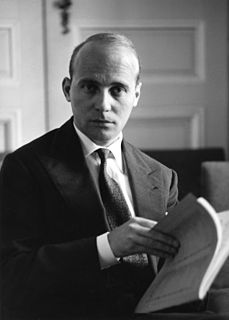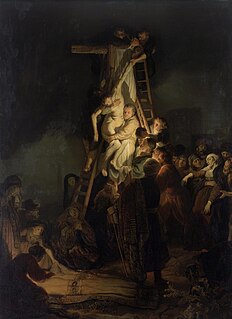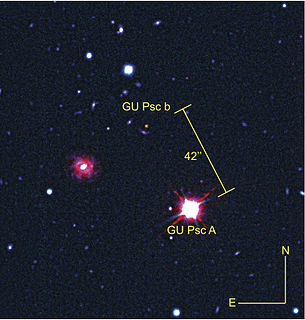Related Research Articles

Juan Leovigildo Brouwer Mezquida is a Cuban composer, conductor, and classical guitarist. He is a Member of Honour of the International Music Council.

Capriccio espagnol, Op. 34, is the common Western title for a five movement orchestral suite, based on Spanish folk melodies, composed by the Russian composer Nikolai Rimsky-Korsakov in 1887. Rimsky-Korsakov originally intended to write the work for a solo violin with orchestra, but later decided that a purely orchestral work would do better justice to the lively melodies. The Russian title is Каприччио на испанские темы.

Hans Werner Henze was a German composer. His large oeuvre of works is extremely varied in style, having been influenced by serialism, atonality, Stravinsky, Italian music, Arabic music and jazz, as well as traditional schools of German composition. In particular, his stage works reflect "his consistent cultivation of music for the theatre throughout his life".

Hans Abrahamsen is a Danish composer born in Kongens Lyngby near Copenhagen. His Let me tell you (2013), a song cycle for soprano and orchestra, was ranked by music critics at The Guardian as the finest work of the 21st-century. His opera The Snow Queen was commissioned and premiered by the Royal Danish Theatre in 2019.
Sergei Rachmaninoff's Prelude in C-sharp minor, Op. 3, No. 2, is one of the composer's most famous compositions. Part of a set of five piano pieces titled Morceaux de fantaisie, it is a 62-bar prelude in ternary (ABA) form. It is also known as The Bells of Moscow since the introduction seems to reproduce the Kremlin's most solemn carillon chimes.
"Concerning Hobbits" is a piece by composer Howard Shore for The Lord of the Rings: The Fellowship of the Ring soundtrack. It is a concert suite of the music of the Hobbits, arranged from the music heard in the film during the early Shire scenes, and features the various themes and leitmotifs composed for the Shire and Hobbits; it is intended to evoke feelings of peace. It is also the title of one of the sections of the prologue to The Lord of the Rings by J. R. R. Tolkien. Excerpts of the piece can be heard during an extended scene in the 2012 film The Hobbit: An Unexpected Journey, where it was tracked intentionally. The piece has become synonymous with the Shire and Hobbiton themes.

The Klavierstücke constitute a series of nineteen compositions by German composer Karlheinz Stockhausen.

Des pas sur la neige is a musical composition by French composer Claude Debussy. It is the sixth piece in the composer's first book of Préludes, written between late 1909 and early 1910. The title is in French and translates to "Footprints in the Snow" The piece is 36 measures long and takes approximately three and a half to four and a half minutes to play. It is in the key of D minor. The prelude was, along with Danseuses de Delphes, one of the preludes Debussy believed should be played "entre quatre-z-yeux" meaning intimately, as if privately.

Ondine is a ballet in three acts created by the choreographer Sir Frederick Ashton and composer Hans Werner Henze. Ashton originally produced Ondine for the Royal Ballet in 1958, with Henze commissioned to produce the original score, published as Undine, which has since been restaged by other choreographers. The ballet was adapted from a novella titled Undine by Friedrich de la Motte Fouqué and it tells the tale of a water nymph who is the object of desire of a young prince named Palemon. The première of the ballet took place at the Royal Opera House, London, on 27 October 1958, with the composer as guest conductor. The first major revival of this Ashton/Henze production took place in 1988.
The Munich Biennale is a contemporary opera and music theatre festival in the city of Munich. The full German name is Internationales Festival für neues Musiktheater, literally: International Festival for New Music Theater. The biennial festival was created in 1988 by Hans Werner Henze and is held in even-numbered years over 2–3 weeks in the late spring. The festival concentrates on world premieres of theater-related contemporary music, with a particular focus on commissioning first operas from young composers.

Descent from the Cross (1634), by Rembrandt Harmenszoon van Rijn, is one of his many religious scenes. The piece is oil on canvas and now located in the Hermitage Museum in St. Petersburg. The piece is intriguing stylistically in its unique figural composition and variety of lighting effects. Aside from composition, the painting is notable in terms of its historical context, from the connection between its subject matter and Rembrandt's family situation to its endangered location during World War II.
Fantasia for Strings is a composition by German composer Hans Werner Henze. It was finished in 1966, as part of the soundtrack for Volker Schlöndorff's film adaptation of Robert Musil's novel The Confusions of Young Törless. This composition has been published by Schott Music.
Asyla, Op. 17, is an orchestral composition by the British composer Thomas Adès. It was finished in 1997 and has been performed widely, especially by the British conductor Simon Rattle. It has been described as a symphony, the third movement being its unacknowledged scherzo.

Kepler-421b is an exoplanet that, as of July 2014, has the longest known year of any transiting planet, although not as long as the planets that have been directly imaged, or many of the planets found by the radial-velocity method, or as long as some transiting planet candidates which are listed as planets in the Extrasolar Planets Encyclopaedia. It is the first transiting-planet found near the snow-line.
Heliogabalus imperator, allegoria per musica is an orchestral work by the German composer Hans Werner Henze.
The String Sonata No. 1, commonly referred to by its original Italian name Sonata per archi, is a composition for string orchestra by German composer Hans Werner Henze. It was composed between 1957 and 1958.

The Double Concerto by German composer Hans Werner Henze is a double concerto for oboe and harp, better known by its original Italian title Doppio concerto. It was completed and first performed in Zurich in 1966, and published by Schott.
Hans Werner Henze's Symphony No. 4 was written in 1955. It was premiered at the Hochschule für Musik, Berlin on 9 October 1963 by the Berlin Philharmonic Orchestra conducted by the composer.

The Snow Queen is an opera by Hans Abrahamsen and was commissioned by the Royal Danish Opera. The world premiere in Danish took place on 13 October 2019 in Copenhagen. On 21 December 2019 the English version was premiered at the Bavarian State Opera in Munich. The work is based on the fairy tale "The Snow Queen" by Hans Christian Andersen and the libretto is by Hans Abrahamsen and Henrik Engelbrecht.

The Chaconne in G minor is a Baroque composition for violin and continuo, traditionally attributed to the Italian composer Tomaso Antonio Vitali. A Dresden manuscript that may have been transcribed in the early 18th century is the earliest known version of the chaconne, but it was not published until 1867 when Ferdinand David arranged it for violin and piano. The origin of its composition has been debated, with some musicologists hypothesizing that the work is a musical hoax composed by David rather than Vitali. Léopold Charlier made significant alterations to the chaconne in the early 20th century, transforming it into a virtuosic, Romantic-style showpiece. It has been arranged by numerous other composers, including Hans Werner Henze, who used it as the basis for his work Il Vitalino raddoppiato (1977).
References
Percussion Today CD booklet by Volker Scherliess